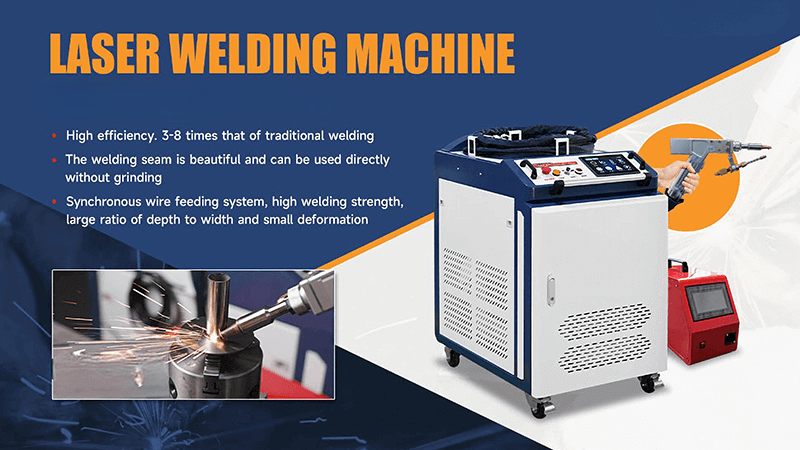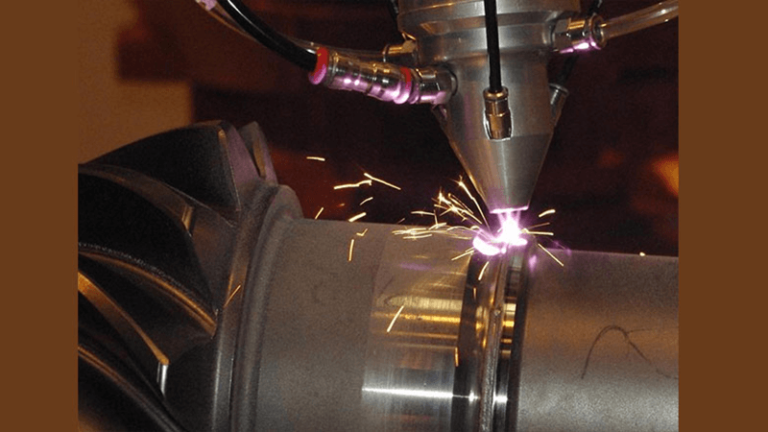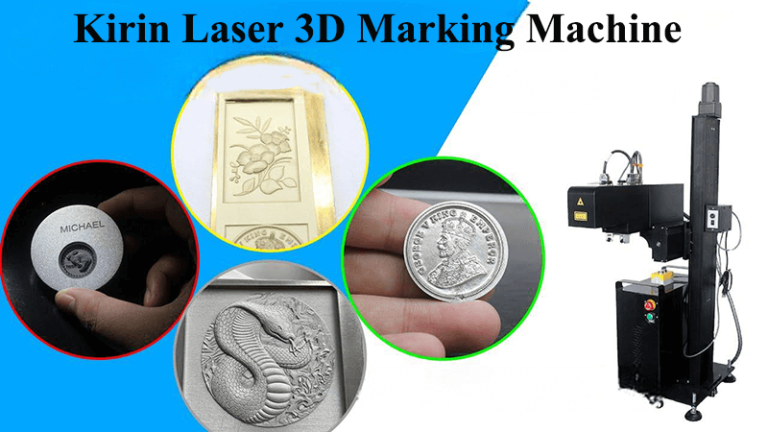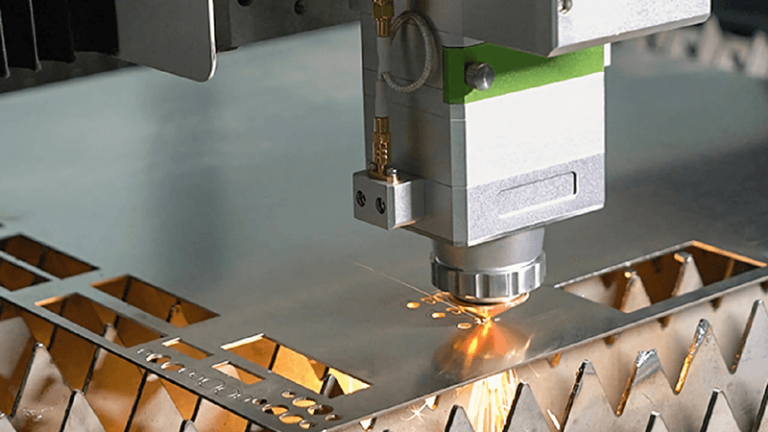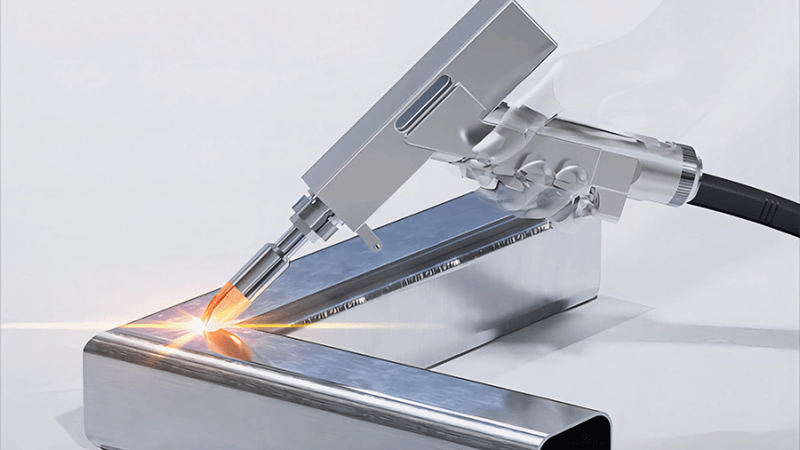
Are you in the market for a laser welding machine? Maybe you're replacing an old one, or perhaps you're stepping into the world of laser welding for the first time. Either way, it can feel like you're standing at the edge of a giant sea of options, each one more complex and advanced than the last. Don’t worry, you're not alone.
When purchasing a laser welding machine, consider key factors such as material compatibility, power efficiency, welding speed, and beam quality to ensure it meets your needs. Additionally, prioritize safety features, maintenance support, and ergonomics for operator comfort. Evaluate the total cost of ownership, including maintenance and energy consumption, beyond just the initial price. By carefully assessing these elements, you can select a machine that enhances productivity while ensuring safety and efficiency.
Choosing the right machine is a big decision, and it's easy to get overwhelmed. But the good news? I’ve got you covered. Here’s what you should look for when buying a laser welding machine to make sure you’re making the best choice for your needs.Why Should You Care About These Factors?A laser welding machine is an investment, and it’s one that should pay off in productivity, precision, and long-term durability.
Laser Power: The Heart of the Machine
When it comes to laser welding, power matters. It’s the driving force behind the machine’s ability to create strong, clean welds. In simple terms: higher power means you can weld thicker materials, faster. So, before you buy, consider the materials you’ll be working with and the thickness you need to handle.
I’ve had clients who were focused solely on price, only to realize later that the machine they bought couldn’t handle the thickness of the steel they worked with. Trust me—don’t make the same mistake. A good rule of thumb? If you plan on welding thicker materials (5mm or more), look for a machine with a power range of at least 1000W to 2000W.
For more detailed insights on power, check out the below table on the relationship between laser welding power and metal.
| Power | Thickness of Stainless Steel (mm) | Thickness of Carbon Steel (mm) | Thickness of Aluminum Alloy (mm) |
|---|---|---|---|
| 1.5kW | 0.5 - 2 | 0.8 - 2.5 | 0.3 - 1.2 |
| 2kW | 1 - 3 | 1.2 - 3.5 | 0.5 - 1.8 |
| 3kW | 2 - 6 | 2.5 - 7 | 1 - 3 |
Please note that these data may vary depending on factors such as material properties, welding processes and quality requirements.
Laser welding machines with higher power can weld thicker materials faster.True
Higher power in laser welding machines allows for welding thicker materials more efficiently, as mentioned in the section about Laser Power.
Air-cooled laser welding machines are recommended for power levels above 2000W.False
Air-cooled systems are typically suitable for machines below 2000W. For power levels above 1000W, water-cooled systems are recommended to ensure effective heat dissipation.
Welding Speed: Don’t Waste Time
Speed is the other big factor that influences productivity. When you’re running a business, time is money. Laser welding machines offer incredibly fast welding speeds compared to traditional methods, but different machines can vary greatly in how quickly they work.
Look for a machine that gives you a good balance between speed and precision. Higher-speed machines can increase your throughput, but make sure they don’t sacrifice the quality of your welds. You want a machine that can handle the required speed without producing inferior results.
The following are the approximate welding speed reference data for different metals during laser welding (assuming in continuous laser welding mode and other conditions like laser power are relatively appropriate):
| Metal Type | Thickness (mm) | Welding Speed Range (m/min) |
|---|---|---|
| Carbon Steel | 1 - 2 | 0.5 - 1.2 |
| Stainless Steel | 1 - 2 | 0.4 - 1.0 |
| Aluminum Alloy | 1 - 2 | 1.0 - 2.5 |
| Copper Alloy | 1 - 2 | 2.0 - 4.0 |
| Titanium Alloy | 1 - 2 | 0.3 - 0.8 |
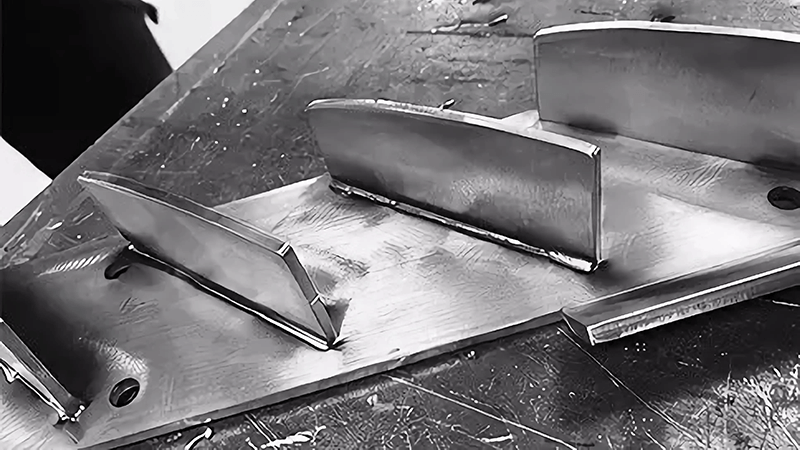
Several points need to be noted:
- These data are just a rough range. The actual welding speed will vary due to many factors, such as laser power (e.g., 1kW, 2kW, etc.), spot size, the type and flow rate of shielding gas, the form of the welded joint (butt joint, lap joint, etc.), and specific requirements for welding quality (e.g., whether full penetration is required or not).
- For example, when the laser power is increased from 1kW to 3kW, the welding speed can be appropriately increased when welding metals of the same thickness to avoid excessive melting.
- For thicker metal materials, the welding speed usually decreases because more time is needed to ensure sufficient penetration. Take aluminum alloy as an example. When the thickness reaches 3 - 5mm, the welding speed may drop to around 0.5 - 1.2m/min.
Precision and Control: Quality is Key
One of the major advantages of laser welding is the precision it offers. You can weld materials with incredible accuracy, which is perfect for industries that require detailed, clean joints. But not all laser welding machines are created equal.
When choosing a machine, look for features that provide better control over the laser’s power, focus, and positioning. This will help you maintain the high standards of your work. Many machines now come with advanced software that allows you to adjust parameters in real-time, making it easier to achieve that perfect weld every time.
For more on precision and control, here’s a resource on optimizing laser welding precision.
- Precision Aspects
- Weld Width Data: In the manufacturing of precision electronic devices, such as the welding of metal components inside smartphones, laser welding can achieve very narrow weld widths. For example, fiber laser welding can attain weld widths of less than 0.2 mm. This level of precision is crucial for small, intricate electronic products, ensuring compact design and excellent performance. In contrast, traditional welding methods, such as arc welding, typically result in weld widths of several millimeters, making it difficult to meet the high-precision requirements of such applications.
- Positioning Precision Data: In the production of certain high-end automotive components, laser welding machines can achieve positioning precision of up to ±0.05 mm. This allows for the accurate focusing of the laser beam on the required welding locations when welding minute parts of an automobile engine or the fine structural components of the vehicle body, ensuring welding accuracy. Some advanced laser welding robotic systems can even achieve higher positioning precision, around ±0.02 mm, significantly enhancing the quality and reliability of the welds.

- Control Aspects
- Power Control Range: High-quality laser welding machines are capable of finely controlling laser power. For instance, industrial-grade fiber laser welding machines offer a power control range from tens of watts to several thousand watts, continuously adjustable. For example, when welding metal sheets of different thicknesses, such as precisely controlling the power between 500 - 800 W for welding 0.5 mm thick stainless steel sheets and adjusting the power to around 1500 - 2000 W when welding 2 mm thick stainless steel sheets. This precise power control ensures optimal welding outcomes under various welding conditions.
- Real-Time Parameter Adjustment: Many modern laser welding devices are equipped with software control systems that allow for real-time adjustment of welding parameters. For example, if minor defects are detected in the weld seam during the welding process, operators can adjust parameters such as laser power, welding speed, or focus position through the software within milliseconds. Studies have shown that such real-time adjustments can reduce welding defect rates by approximately 30% - 50%, significantly enhancing the stability and consistency of welding quality.
Precision and control in laser welding machines can be enhanced through advanced software that allows real-time parameter adjustments.True
Advanced software in laser welding machines enables real-time adjustments of parameters like power and speed, improving precision and weld quality, as discussed in the Precision and Control section.
Water-cooled welding systems are generally simpler and more cost-effective than air-cooled systems.False
Water-cooled systems are more complex and costly compared to air-cooled systems due to the additional components like water tanks, pumps, and radiators.
Cooling System: Stay Cool Under Pressure
Welding creates heat, and laser welding is no exception. High-powered laser machines generate significant heat that must be dissipated to prevent damage to the machine. A good cooling system is essential, especially for high-power machines that will be running for extended periods.
Some machines come with integrated water cooling systems, while others use air cooling. While air cooling may be sufficient for lower-power machines, I always recommend a water-cooled system for anything above 1000W. This ensures that the machine can run for longer periods without overheating, increasing its lifespan.

Two Types of Cooling System for Laser Welding Machine
- Air-Cooled Welding
- Principle:
Air cooling utilizes the natural flow of air or employs devices such as fans to circulate air, thereby removing the heat generated during the laser welding process. When the welding machine is operating, internal heating elements raise the temperature of the surrounding air. The heated air is expelled from the equipment by the airflow generated by the fan, and cold air is immediately drawn in to replace it. This continuous cycle facilitates the dissipation of heat, thereby reducing the equipment's temperature. - Advantages:
- Simple System and Low Cost:
The air cooling system has a relatively simple structure, mainly consisting of a fan and ventilation channels, without the need for complex water cooling pipes, water tanks, or pumps. This allows the overall design of the welding equipment to be more streamlined and compact, not only reducing manufacturing costs but also minimizing the footprint, making it easier to install and use in space-limited work areas. For small welding workshops or users with limited budgets, air-cooled welding equipment offers significant economic advantages. Additionally, its lower maintenance requirements further reduce ongoing operational costs, with primary maintenance focused on regular cleaning and inspection of the fan to ensure its proper operation. - Easy to Operate and User-Friendly:
Due to its simple structure, air-cooled welding equipment is relatively easy to understand and operate. Operators do not require extensive training and can quickly become familiar with starting, stopping, and adjusting basic operating parameters. This lowers the technical barrier for individuals who are not highly skilled in welding or are new to the welding field, enhancing work efficiency and the equipment's ease of use, allowing for practical production applications within a short time. - Effective Within a Certain Power Range:
Air cooling can meet basic cooling needs for laser welding machines with power levels below 2kW, such as common power levels of 800W and 1200W. Especially in scenarios where welding tasks are lighter, working time is shorter, and there are longer intervals between operations, air cooling systems can effectively control the equipment temperature, ensuring the stability of the welding process and preventing equipment failure or reduced weld quality due to overheating. For example, in the welding and repair of small electronic products or the processing of simple metal crafts, air-cooled welding equipment is widely used due to its suitability within the mid to low power range and cost advantages.
- Principle:
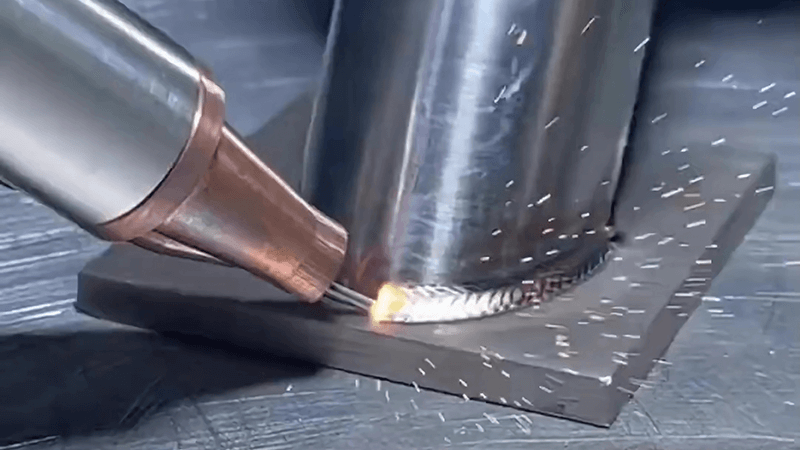
- Disadvantages:
- Cooling Effect Greatly Affected by the Environment:
The cooling performance of air cooling is closely related to the surrounding air temperature, humidity, and ventilation conditions. In high-temperature environments, such as hot summer workshops or poorly ventilated enclosed spaces, the incoming air temperature is already high, significantly reducing the cooling efficiency of the air cooling system. This leads to an increase in the internal temperature of the equipment, affecting welding performance and equipment lifespan. Similarly, in high humidity environments, moisture may enter the equipment, increasing the risk of short circuits and other faults. In dusty environments, dust drawn in by the fan can accumulate inside the equipment, not only impairing the cooling effect but also potentially damaging electronic components, increasing equipment failure rates and maintenance difficulty. - Insufficient Cooling Capacity at High Power Levels:
Although air cooling can function effectively within the mid to low power range, when the power of the laser welding machine exceeds 2kW, its cooling capacity becomes inadequate. As power increases, the heat generated during welding significantly rises, while the specific heat capacity of air is relatively low, limiting the amount of heat that can be removed per unit time. This makes it impossible to dissipate the large amounts of heat quickly and effectively, causing the internal temperature of the equipment to rise rapidly. Prolonged operation under such high-temperature conditions can lead to performance degradation of key components, such as the laser generator and optical lenses, due to overheating. In severe cases, irreversible damage may occur, directly affecting weld quality and the equipment's service life, greatly limiting the application of air-cooled welding equipment in high-power and high-intensity welding tasks.
- Cooling Effect Greatly Affected by the Environment:

- Water-Cooled Welding
- Principle:
The water cooling system uses circulating water as a cooling medium to absorb and carry away the heat generated by the laser welding machine. Cold water is pumped out from the water tank by a pump and flows through sealed pipes to the heating parts of the welding machine. Here, heat is transferred from the heating elements to the cold water, raising the water temperature. The hot water then flows to a radiator, where it exchanges heat with the external air, dissipating the heat into the air. The cooled water then returns to the water tank, and this cycle continues, continuously cooling the equipment and maintaining it within an appropriate operating temperature range. - Advantages:
- Outstanding Cooling Performance:
Water has a high specific heat capacity, meaning it can absorb a large amount of heat with only a slight increase in its own temperature. Therefore, the water cooling system has a powerful and efficient cooling capability. For high-power laser welding machines with power levels up to 1kW, 1.5kW, 2kW, and 3kW, the water cooling system can accurately control the equipment temperature, ensuring stable operational performance even during long-term, high-intensity continuous work. This effectively prevents various problems caused by overheating, providing reliable support for high-precision and high-quality welding tasks. - Excellent Temperature Stability:
The water cooling system can provide an extremely stable temperature environment for the laser welding machine. Due to water's large heat capacity, its temperature changes slowly after absorbing heat, resulting in minimal temperature fluctuations inside the equipment. This creates a stable working condition for the laser equipment's optical and electronic components, as well as the entire welding process. Stable temperatures help improve the consistency and reliability of weld quality, especially in high-end manufacturing fields that require stringent welding precision and quality, such as aerospace, automotive manufacturing, and electronic chip packaging. Water-cooled welding technology, with its excellent temperature stability, has become an indispensable key technology, ensuring that complex and precise welding tasks are successfully completed and meeting industry demands for high-quality weld joints. - Disadvantages:
- Complex System and High Cost: The water cooling system is more complex, comprising components such as water tanks, pumps, water pipes, radiators, and various temperature sensors and flow controllers. These components not only require high-precision manufacturing processes and quality materials but also necessitate professional installation and calibration techniques, significantly increasing the equipment's procurement cost. Additionally, the water cooling system requires regular maintenance and upkeep during use, such as periodically replacing the cooling water in the water tank to prevent scale buildup that can affect cooling efficiency, checking water pipe connections for potential leaks, and cleaning dust and debris from radiator surfaces to ensure effective heat exchange. These maintenance tasks are not only cumbersome and complex but also require certain professional knowledge and skills, further increasing operational and labor costs, and imposing higher demands on users' technical support and maintenance capabilities.
- Potential Risk of Leaks:
Since the water cooling system involves numerous water pipe connections and complex sealing structures, there is a risk of leaks. If water pipes rupture, connections become loose, or seals degrade or are damaged, water may leak into the equipment. Water is detrimental to electronic components, potentially causing short circuits, corrosion, and other severe damage to key electronic parts such as circuit boards, drivers, and power supplies, leading to equipment failure or even scrapping. Therefore, users need to regularly conduct comprehensive and meticulous seal checks and maintenance on the water cooling system, install leak detection devices, and develop emergency response plans to minimize the damage caused by leaks. However, these additional measures undoubtedly increase the complexity of equipment usage and maintenance costs.
- Principle:
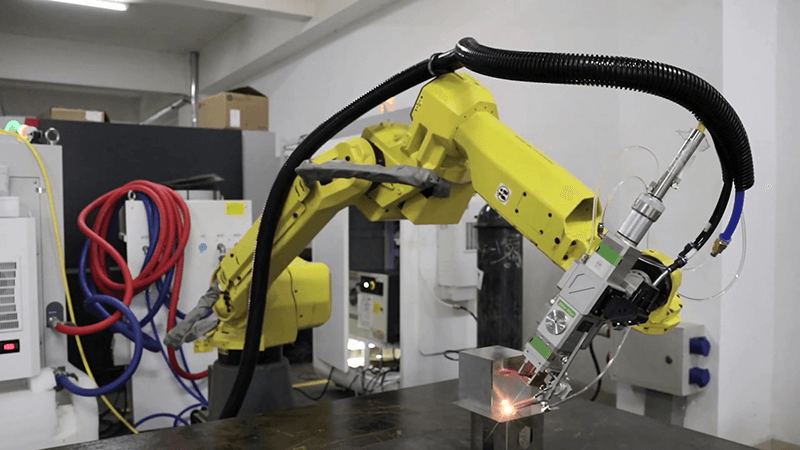
Maintenance and Service: Be Ready for the Long Haul
Laser welding machines aren’t like your basic tools—they require regular maintenance to keep performing at their best. So, when you’re choosing a machine, think about how easy it will be to maintain.
Check for factors like the availability of spare parts, customer service, and the overall reputation of the manufacturer. It’s also a good idea to ask about the machine’s warranty and what it covers. Some brands (like ours at Kirin Laser) offer comprehensive maintenance packages and customer support, ensuring that you’re not left in the lurch if something goes wrong.
Want to dive deeper into the subject? I found a great article on machine maintenance.
Maintenance support and the availability of spare parts are crucial factors to consider when purchasing a laser welding machine.True
Regular maintenance and the availability of spare parts are essential for the longevity and optimal performance of laser welding machines, as highlighted in the Maintenance and Service section.
Laser welding machines do not require any safety features since they are inherently safer than traditional welding methods.False
Despite being safer than traditional methods, laser welding machines still require safety features such as shields and emergency stop functions to protect operators and ensure safe operation.
Cost vs. Value: It’s Not Just About Price
I get it—everyone loves a good deal. But when it comes to laser welding machines, don’t just focus on the upfront cost. A cheaper machine might seem like a great option at first, but it can end up costing you more in the long run.
Consider the total cost of ownership, including maintenance, power consumption, and potential downtime. A slightly higher-priced machine may save you money in the long run if it offers better durability, faster welding speeds, and lower maintenance needs.
I’ve had clients who saved a few bucks up front, only to find themselves paying more for repairs and lost productivity down the road. So, always weigh the price against the long-term value.
Hot Selling Fiber Laser Welding Machine at Kirin Laser in 2025
Brand Reputation and Support: Don’t Gamble with Your Business
When you’re buying any high-tech equipment, brand reputation matters. You want a machine from a manufacturer that stands behind its products with excellent customer support and a proven track record of reliability.
I’m proud to say that Kirin Laser has built a strong reputation over the years, and we stand by our machines. Whether it’s pre-sale consultations, training, or post-sale support, we’ve got you covered. A good brand will offer more than just a product—they’ll be your partner in ensuring your operations run smoothly.
Check out reviews and testimonials from other customers to see how a brand’s machines have performed in real-world situations. I can tell you firsthand that choosing the right brand makes all the difference.
Safety Features: Protect Your Investment
Laser welding is inherently safer than traditional welding, but that doesn’t mean you can skip out on safety features. Look for machines that include proper safety shields, emergency stop functions, and protective mechanisms to prevent accidents.
Laser welding machines also often come with features like automated shutdowns if something goes wrong, or systems that monitor the machine’s performance to ensure it’s running safely. These features not only protect your workers but also help ensure the longevity of your equipment.
For more information on welding safety, check out this comprehensive guide to laser welding safety.
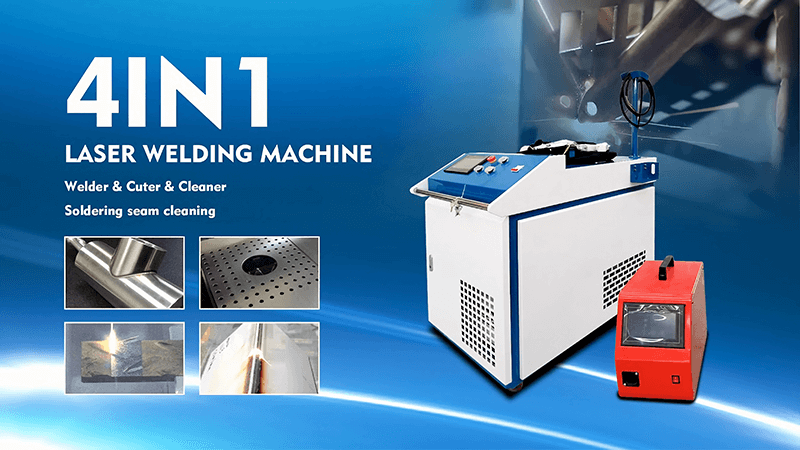
Conclusion: Making the Right Choice
Choosing the right laser welding machine doesn’t have to be stressful. By focusing on the factors that matter most—laser power, speed, precision, cooling, and overall value—you can make an informed decision that will pay off in the long run. Remember, this is an investment, so take your time and do the research. Whether you're welding small parts or large structures, the right machine will help you work smarter, not harder.
At Kirin Laser, we’re here to help you make the best choice for your business. If you have any questions or need more guidance, feel free to reach out! Let’s make your welding operations more efficient and reliable today.
References:
- "How to Get the Best Deal on Welder Laser Price", from Kirin Laser.
- "How Welding Laser Technology is Revolutionizing Manufacturing", from Kirin Laser.
- "How to Find the Best Deals on Laser Welding Equipment", from Kirin Laser.
- "How to Choose the Best Laser Welding Equipment for Your Needs?", from Kirin Laser.
- "A Complete Guide to Set Laser Welding Machine for All Applications", from Kirin Laser.
- "How To Find Perfect Laser Welding Machine", from Laser Technologies.
- "Laser Welders: A comprehensive guide to laser welding technology", from Maszynohurt.
- "The Definitive Guide to Laser Welding Machines", from Denaliweld.

